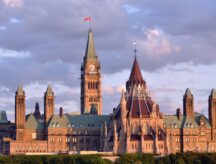How one recent immigration trend is helping boost Canada’s linguistic and cultural diversity
A nation once dominated by immigration from Europe, Canada is now seeing a much more diverse range of immigrants come to this country.
Whereas as recently as 40 years ago, 61.6% of all Canadian immigrants were born in Europe and just 12.1% of immigrants were born in countries throughout Asia and the Middle East, those numbers have now experienced a complete reversal.
Discover if You Are Eligible for Canadian Immigration
According to the 2021 Census, 62% of recent immigrants — those who came to Canada between 2016 and 2021 —reported that they were born in either an Asian or Middle Eastern country. Meanwhile, European countries accounted for 10.1% of recent immigrants to this country.
In fact, 6 of the top 10 birth countries of recent immigrants fell in these two regions.
India was the top birth country among recent Canadian immigrants (18.6%) while the Philippines (11.4%) ranked second, China (8.9%) came third, and Syria (4.8%) ranked fourth. Outside the top five, Pakistan was the birth country of 2.7% of recent immigrants to Canada and Iran was the birthplace of 1.9% of recent newcomers.
Beyond Asian and Middle Eastern countries, the remaining four spots in the top 10 were taken by Nigeria (fifth, 3%), the United States (sixth, 3%), France (eighth, 2%) and the United Kingdom (10th, 1.7%).
What does this mean?
The shifting proportion of immigrants coming to Canada from a varied number of birth countries signals that we are seeing a more culturally and linguistically diverse Canada than ever before.
As Canada continues to uphold its values and missions related to being a country that welcomes people from all around the world, this developing trend in immigration suggests that Canada is accomplishing that very goal.
For instance, as evidence of this country’s increasing diversity, 2021 census data indicates that 450 different mother tongues were reported among Canadians. “Arabic (10.3%), Tagalog (8.4%), Mandarin (7.9%), and Punjabi (6.5%) were the non-official languages" — languages other than English and French — reported most often as mother tongues by recent immigrants, either alone or with another language.
Accordingly, this data suggests that the wide range of birth countries among Canadian immigrants contributes strongly to linguistic diversity in this country.
Of course, with linguistic diversity also comes ethnocultural differences between immigrants from different birth countries. Whether this presents itself in the form of food, music, or clothing, among other things, the widening range of birth countries from which Canada is receiving immigrants is further heightening the degree of diversity that exists throughout this country.
Discover if You Are Eligible for Canadian Immigration
© CIC News All Rights Reserved. Visit CanadaVisa.com to discover your Canadian immigration options.
- Do you need Canadian immigration assistance? Contact the Contact Cohen Immigration Law firm by completing our form
- Send us your feedback or your non-legal assistance questions by emailing us at media@canadavisa.com







